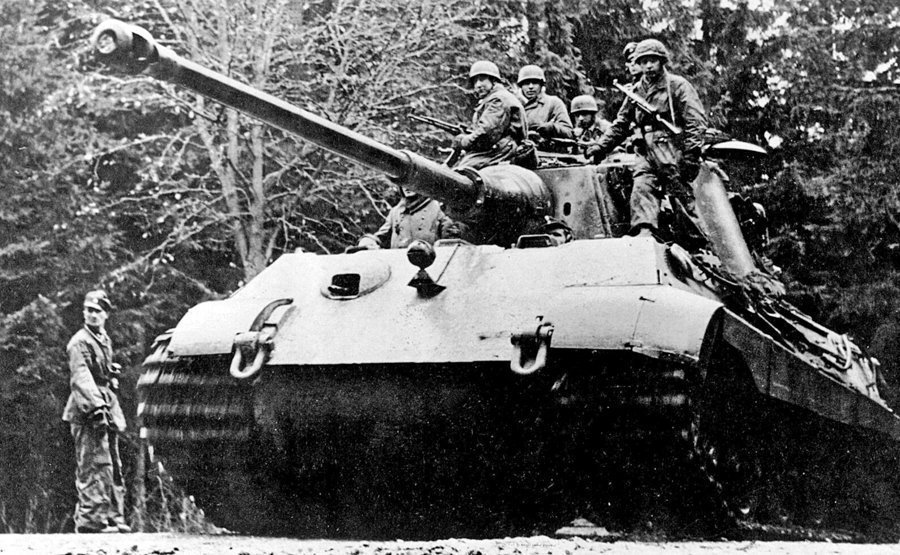

Allied intelligence failed completely to detect the upcoming offensive and almost complete surprise against a weak section of the Allies line was achieved at a time of heavy overcast when the Allies strong air forces would be grounded. Moreover, the degree of surprise achieved was compounded by Allied overconfidence, preoccupation with their own offensive plans, poor aerial reconnaissance, and the relative lack of combat contact by the US First Army. Even Ultra (the allies reading of secret German radio messages) revealed nothing about the up-coming buildup and offensive. The Ardennes attack was planned in total secrecy in almost total radio silence. The goal of these operations as planned by the Germans was to split the British and American Allied line in half, capturing Antwerp and then proceeding to encircle and destroy four Allied armies, forcing the Western Allies to negotiate a peace treaty in the Axis' favour. Wacht am Rhein was supported by subordinate operations known as Bodenplatte, Greif, and Wahrung. Army (and known to the general public as the Battle of the Bulge), started on December 16, 1944. The Ardennes Offensive (called Unternehmen: Wacht am Rhein by the German military Army Gruppe B), officially named the Battle of the Ardennes by the U.S. Normandy - Dragoon - Siegfried Line - Ardennes Offensive - Elbeįrance - The Netherlands - Dunkirk - Britain - Dieppe - Villefranche-de-Rouergue - Normandy - Dragoon - Arnhem - Scheldt - Hurtgen Forest - Aachen - Bulge - Plunder - Varsity - Aintree Related subjects: World War II Battle of the BulgeĪmerican soldiers photographed in the Ardennes during the Battle of the Bulge.Īllied victory, last major German offensiveĭec 16 - start of the Battle: about 83,000 men 242 Sherman tanks, 182 tank destroyers, and 394 pieces of corps and divisional artillery.ĭec 16 - start of the Battle: about 200,000 men, 5 armoured divisions, 12⅔ infantry divisions, and about 500 medium tanks, supported by 1,900 guns and Werfers.īritish: 200 dead, 1400 wounded and missing


 0 kommentar(er)
0 kommentar(er)
